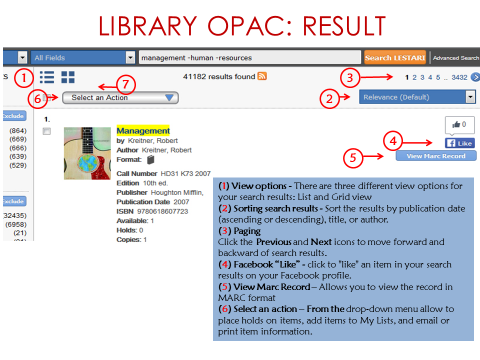The strong development of information and communication technology has made a tremendous impact on all activities in the field of library – information and design of OPAC (Online Public Access Catalog – online search catalog) is one of the clear evidence for this problem.
OPAC is an online catalog of materials organized in a library or library system. It can be said that OPAC is a useful tool and an indispensable component of a modern library in the current rapid development of information technology. It is the face of the Library, it is a bridge to exchange information between readers and the library. The operation of a library is considered to be effective when it satisfies the maximum needs of readers quickly.

To do that, in addition to equipping abundant resources, well-performing business processes, each library also needs a friendly OPAC interface, with many features, appropriate design easy to use, create maximum conditions for readers to search and send requests quickly. Recognizing the importance of this, over the past 30 years, library software vendors have focused on developing the OPAC interface for their software.
OPAC started replacing traditional catalogs of posters in the 1980s, the history of it development has gone through three different generations, each of which has many improvements.
The first generation is quite simple. They are designed to resemble traditional catalogs with bibliographic features based on MARC records to help look up documents such as books and magazines in libraries. Their ability to search information is limited to the search function by author name or document name
The second generation has been around since the late 1980s and they are marked by improved user interfaces. Some of the Boolean search capabilities, improved truncation operators, and the number of access points also increased.

The third generation has markedly improved the function of the current OPAC compared to the second generation. Firstly, with the application of the Z39.50 protocol and the Web interface in OPAC, their functionality has quickly changed from the traditional OPAC to the function of the portal. For example, some OPACs provide links to publishers, journal articles, indexes, and other full-text documents from database providers or electronic publishers.
Next, users can use a web-based OPAC interface to search a variety of sources including print and electronic resources in the library and some sources outside the library. Moreover, the functions of OPAC are also rapidly improved. OPAC has integrated many new features such as ranking search results, displaying new book notices with cover images of documents, and listing URLs in the table of contents.
Today, OPACs are known as information portals, or electronic resource management systems. And users can use it as easy as searching on Google.
